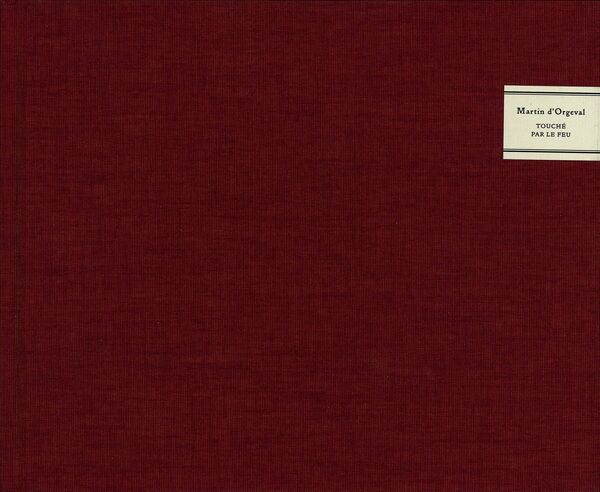Kontakt
art book cologne GmbH & Co. KG
Deutzer Freiheit 107
50679 Köln
Germany
Öffnungszeiten Büro und Showroom:
Montag-Freitag von 8-17 Uhr
info@artbookcologne.de
Tel.: +49 221 800 80 80
Fax: +49 221 800 80 82
Über uns
Seit 1997 sind wir Großhandel für hochwertige Publikationen der Gebiete Kunst, Kunsttheorie, Kunstgewerbe, Architektur, Design, Fotografie und illustrierte Kulturgeschichte. Unser kleines Team setzt sich aus den Fachgebieten Kunst, Kultur, Musik, Buchhandel und Medien zusammen und hat bei aller Vielfalt einen gemeinsamen Nenner: Die Begeisterung für schöne Kunstbücher.
Der Schwerpunkt unserer Tätigkeit liegt in der Übernahme von Restauflagen von Verlagen, Museen und Kunstinstitutionen. Wir bieten diese Titel dem Sortiments- und Versandbuchhandel, den Museumsshops und dem Kunsthandel an.
Martin d'Orgeval – Touché par le feu
| Verlag | Steidl |
| Jahr | 2009 |
| Einbandart | Leinen |
| Sprache | Französisch |
| ISBN | 978-3-86521-900-8 |
| Seiten | 80 |
| Gewicht | 686 g |
| Abbildungen | mit zahlr. Abb |
| Mehr | |
| Artikel ID | art-13550 |
On 1 February 2008 at 5.00 a.m., a fire ripped through Deyrolle, the famous old entomology and taxidermy store in the heart of Paris. Its historic collections of thousands of butterflies and rare insects, stuffed animals and minerals, built up since it opened in 1831, went up in smoke, and with them the memories of generations of schoolchildren, dreamers and enthusiasts fascinated by their motionless beauty.
Stuffed, mounted and classified, the specimens of a wide range of species conserved by this world-renowned institution were at best singed and at worst reduced to ashes. That which Man and science had taken from the natural cycle of life and death and fixed forever for our wide-eyed pleasure was partially brought back to its original destiny: the fading and disappearance that awaits any creature. Time had been made to stand still, and Nature had reclaimed its rights.
Martin d’Orgeval’s photographs show the animals and insects that survived the disaster in situ, against a background of charred woodwork in the shop that had been their habitat since their ‘natural’ death. The objects and the location form an entire work, the result of a strange, unique process in which creation, conservation and destruction have followed on from one another – a process completed and given closure by photography.

